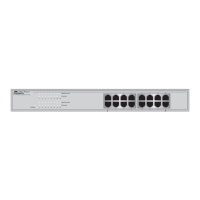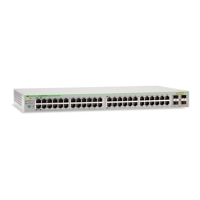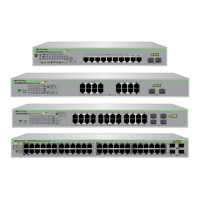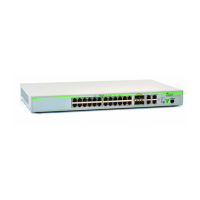Chapter 26: Policy-Based QoS Commands
466 Section IV: Security and Traffic Control
Specifies no to the parameter state.
sendtomirror
Specifies yes, no, or none to the state that mirroring is enabled on
the packets the match the conditions of the classifiers. The default
setting is none.
trafficclasslist
Specifies a list of traffic classes. To specify multiple classifiers, use
a comma (,) to separate them. To specify a range of classifiers,
use a hyphen (-). The default setting is none.
redirectport
Specifies a port number to the traffic is forwarded from.
port_mumber
Specifies a port number.
ingressport
Specifies a list of input ports that the QoS policy is applied to. The
port can be an ingressport to only one QoS policy. The default
setting is none.
port_list
Specifies a list of ports. To specify multiple ports, use a comma (,)
to separate them. To specify a range of ports, use a hyphen (-).
all
Specifies all the switch ports.
egressport
Specifies an input port that the QoS policy is applied to. The port
can be an egressport to only one QoS policy. The default setting is
none.
Description
Use this command to create a QoS policy. You can prioritize network
traffic with QoS policies to control bandwidth usage. The QoS policy
consists of traffic classes and is applied to switch ports.
Here are the guidelines for creating a QoS policy:
The markvalue parameter of the flow group has higher priority over
the makrvalue parameter of the traffic class and indscpoverwrite
parameter of the policy.
The tos and moveprioritytotos parameters cannot be used
concurrently.
The CREATE QOS POLICY command cannot be used when
DCHP Snooping is enabled.

